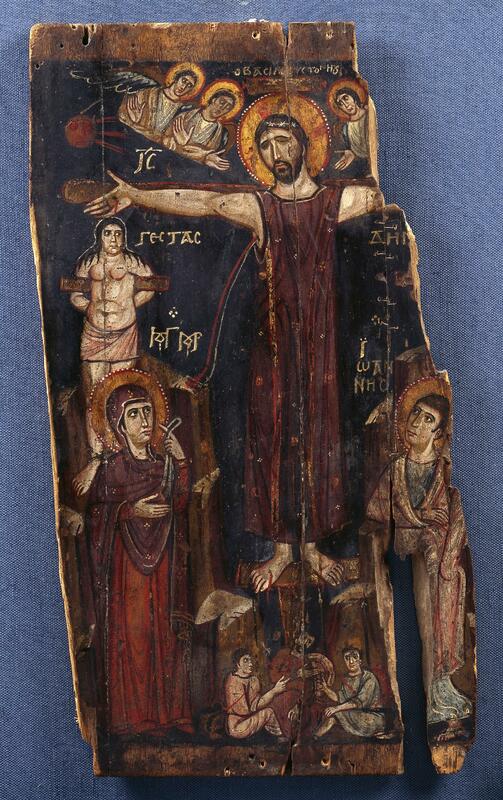Crucifixion icon, Mount Sinai
Type:
Icons
Date:
Eighth century
Location or Findspot (Modern-Day Country):
Egypt
Dimensions:
46.4 × 25.1 cm
Description:
The Orthodox monastery of the God-Trodden Mount Sinai (later renamed in honor of the fourth-century martyr St. Catherine) contains more than half of all surviving Byzantine icons, a Greek word that means images in general but especially panels that depict holy figures. In this remote location they were preserved from the destruction of images during the two periods of Byzantine iconoclasm. Many icons were donated to Mount Sinai by pilgrims to the site.
An eight-century image of the Crucifixion depicts Jesus dead on the cross, wearing the crown of thorns and with blood and water flowing from his side, a reference to John 19:34 and to the Eucharist, in which wine was to be mixed with water, according to a Byzantine council held in 692.
An eight-century image of the Crucifixion depicts Jesus dead on the cross, wearing the crown of thorns and with blood and water flowing from his side, a reference to John 19:34 and to the Eucharist, in which wine was to be mixed with water, according to a Byzantine council held in 692.
Relevant Textbook Chapter(s):
4
Repository and Online Resources:
• Read more about the icons at Mount Sinai on the Princeton University website.
Image Credits:
Saint Catherine's Monastery

